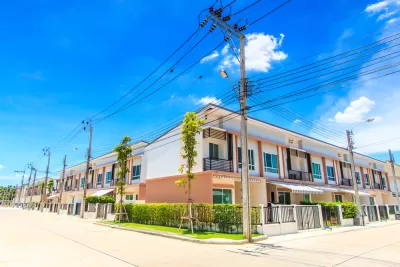Landlords are the focus of a proposed bill that would provide extra perks for accepting Housing Choice vouchers.

The reluctance of landlords to rent to recipients of the federal housing assistance program known as Section 8, writes Kriston Capps in Bloomberg CityLab, "locks families into cycles of poverty and segregation" as "landlords in more-affluent neighborhoods especially tend to hold households with assistance at bay." A bill proposed by Delaware Senator Chris Coons and North Dakota Senator Kevin Cramer would create more incentives for participating in Section 8. "the bill is filled with carrots for property owners who have fled the program, as well as straightforward cash benefits for others who decide to join."
"The bill draws on recent research into what landlords want — a critical but often overlooked question in discussions about housing aid." Landlord incentives include signing bonuses and inspection reciprocity, as well as a hotline which will connect landlords to HUD. Increasing the number of landlords that accept Housing Choice Vouchers, says Sen. Coons, will give more Americans "greater choices and opportunities in finding a home to build their foundation upon." With the end of the federal eviction moratorium looming and many households teetering on the edge of homelessness, the bill could bring welcome reform to "a federal housing assistance program that has long been beleaguered by years-long waiting lists and administrative burdens."
FULL STORY: The Incentives That Might Make Landlords Take Section 8 Tenants

Planetizen Federal Action Tracker
A weekly monitor of how Trump’s orders and actions are impacting planners and planning in America.

DARTSpace Platform Streamlines Dallas TOD Application Process
The Dallas transit agency hopes a shorter permitting timeline will boost transit-oriented development around rail stations.

Congressman Proposes Bill to Rename DC Metro “Trump Train”
The Make Autorail Great Again Act would withhold federal funding to the system until the Washington Metropolitan Area Transit Authority (WMATA), rebrands as the Washington Metropolitan Authority for Greater Access (WMAGA).

Supreme Court Ruling in Pipeline Case Guts Federal Environmental Law
The decision limits the scope of a federal law that mandates extensive environmental impact reviews of energy, infrastructure, and transportation projects.

Texas State Bills to Defund Dallas Transit Die
DART would have seen a 30% service cut, $230M annual losses had the bills survived.

Bikeshare for the Win: Team Pedals to London Cricket Match, Beats Rivals Stuck in Traffic
While their opponents sat in gridlock, England's national cricket team hopped Lime bikes, riding to a 3-0 victory.
Urban Design for Planners 1: Software Tools
This six-course series explores essential urban design concepts using open source software and equips planners with the tools they need to participate fully in the urban design process.
Planning for Universal Design
Learn the tools for implementing Universal Design in planning regulations.
Roanoke Valley-Alleghany Regional Commission
City of Mt Shasta
City of Camden Redevelopment Agency
City of Astoria
Transportation Research & Education Center (TREC) at Portland State University
US High Speed Rail Association
City of Camden Redevelopment Agency
Municipality of Princeton (NJ)





























